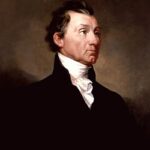The Economic Crisis Unfolds
The Panic of 1819 marked America’s first major economic depression. Bank failures swept across the nation in early 1819. Cotton prices collapsed from 32 cents to 16 cents per pound. The Second Bank of the United States called in loans aggressively. Western land speculation bubbles burst simultaneously. Unemployment soared as businesses closed their doors permanently.
Monroe’s Limited Response
President James Monroe refused to authorize federal intervention programs 📊. His administration believed strict constitutional interpretation prohibited direct economic relief. Monroe argued that government assistance would exceed federal authority. Secretary of the Treasury William Crawford supported this hands-off approach. The president maintained that natural market forces would restore economic stability.
Congressional Attempts at Relief
Congress proposed several relief measures during the Panic of 1819 💰. The Land Law of 1820 allowed settlers to purchase smaller parcels. Relief acts extended payment deadlines for federal land purchases. However, Monroe opposed broader intervention programs. His administration blocked more comprehensive economic stimulus proposals ⚠️.
Impact:
Immediate Economic Devastation
The Panic of 1819 created widespread unemployment across American cities 📉. Factory workers lost jobs as manufacturing declined sharply. Farmers faced foreclosure when crop prices plummeted. Western settlers abandoned homesteads unable to meet mortgage payments. Banks foreclosed on properties throughout the Ohio Valley. Urban poverty increased dramatically in major commercial centers.
Political Consequences
Monroe’s inactive response sparked fierce political criticism 🔥. Opposition leaders condemned the administration’s constitutional rigidity. Voters blamed the president for prolonging economic suffering unnecessarily. Western states particularly criticized federal land policies. The crisis strengthened arguments for expanded federal powers. Democratic-Republican unity began fracturing over economic philosophy differences.
Long-term Constitutional Impact
The crisis revealed limitations of strict constitutional interpretation during emergencies. Future presidents would cite this precedent when justifying federal intervention. The Panic of 1819 influenced debates about federal versus state authority 🌍. Economic nationalism gained support among previously reluctant politicians. This crisis helped shape modern expectations of presidential economic leadership.
